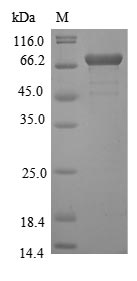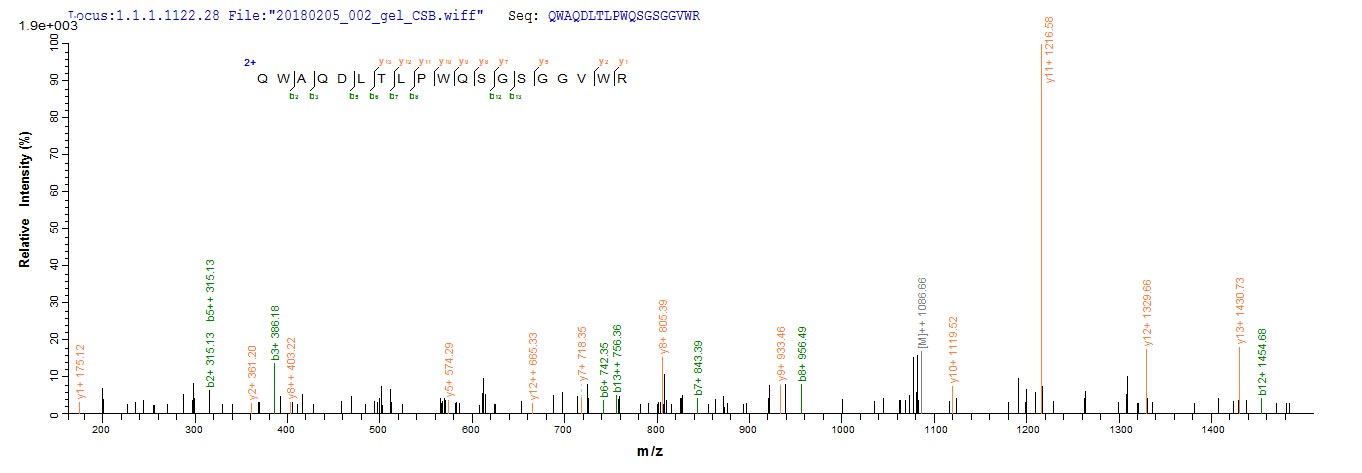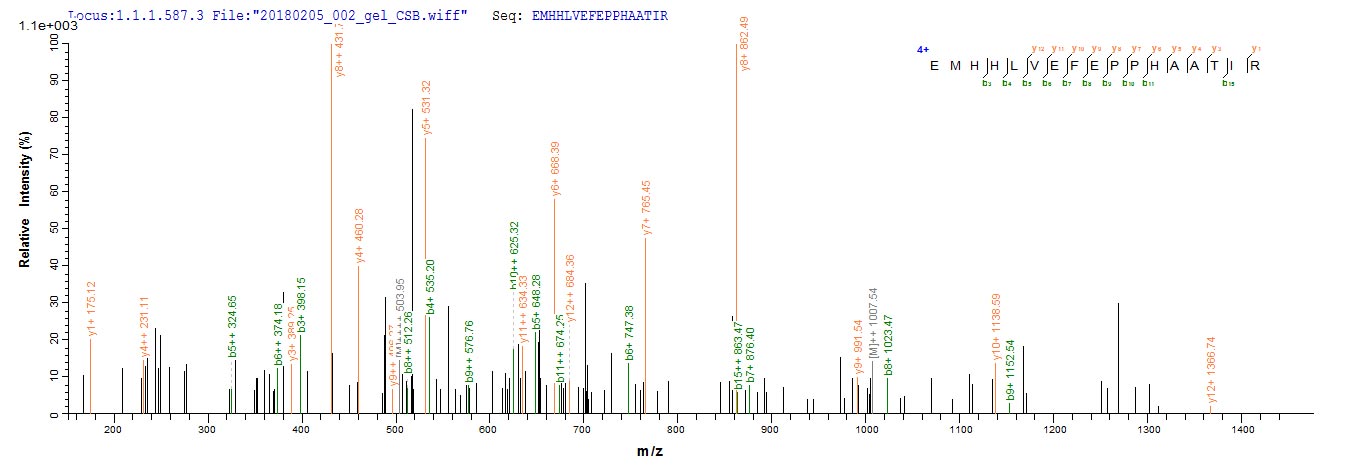The gene fragment corresponding to the 286-730aa of the Yellow fever virus Genome polyprotein protein was synthesized, with appropriate restriction sites suitable for in-frame cloning into an expression vector, with N-terminal 10xHis-GST tag and C-terminal Myc tag. The E.coli was transformed with the expression vector, and the clone was expressed upon certain induction. After the induced cell centrifugation, the recombinant protein was purified from the cell extract and presented as N-terminal 10xHis-GST-tagged and C-terminal Myc-tagged fusion. This recombinant Yellow fever virus Genome polyprotein protein's purity is greater than 85% assayed by SDS-PAGE. The Genome polyprotein protein ran to a band of about 78 kDa molecular weight on the gel.
Yellow fever virus capsid protein is a potent suppressor of RNA silencing that binds double-stranded RNA. Yellow fever virus encodes a protein that blocks the mosquito’s immune response, suggesting the pathogen’s continued existence in nature depends on staying one step ahead of the vector’s antiviral defense. Yellow fever virus capsid protein is a potent repressor of RNA interference. Although it is known that the flavivirus capsid protein is essential for genome packaging and formation of infectious particles, the minimal requirements of the dimeric capsid protein for virus assembly/disassembly have not been characterized. Yellow fever virus genome polyprotein is also known as Capsid protein C or Core protein. Core Protein-Directed Antivirals and Importin β Can Synergistically Disrupt HBV Capsids.








